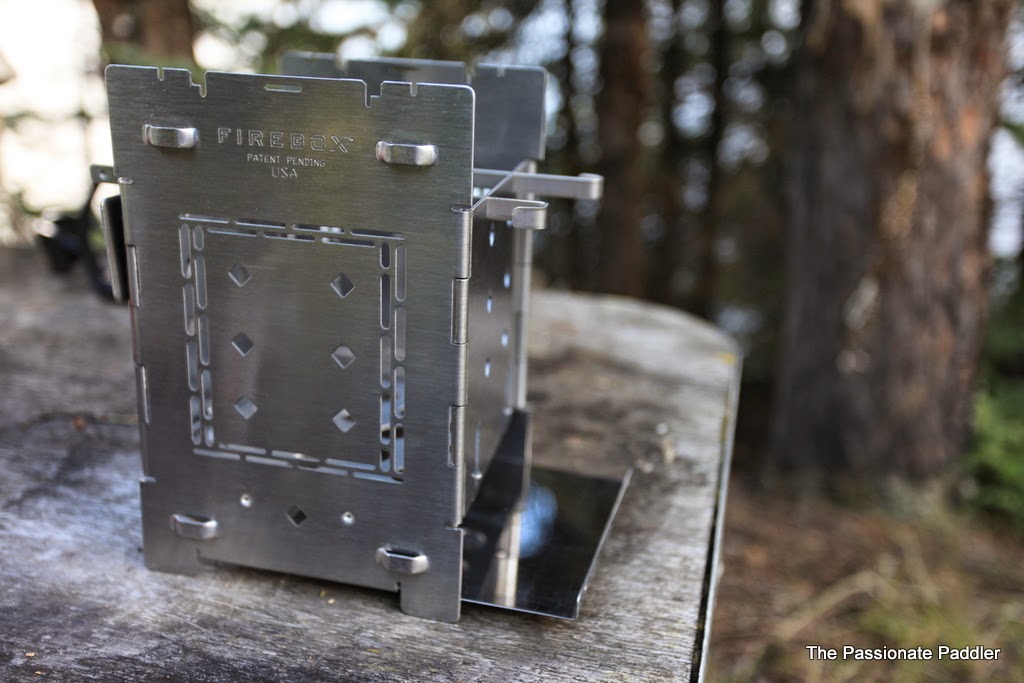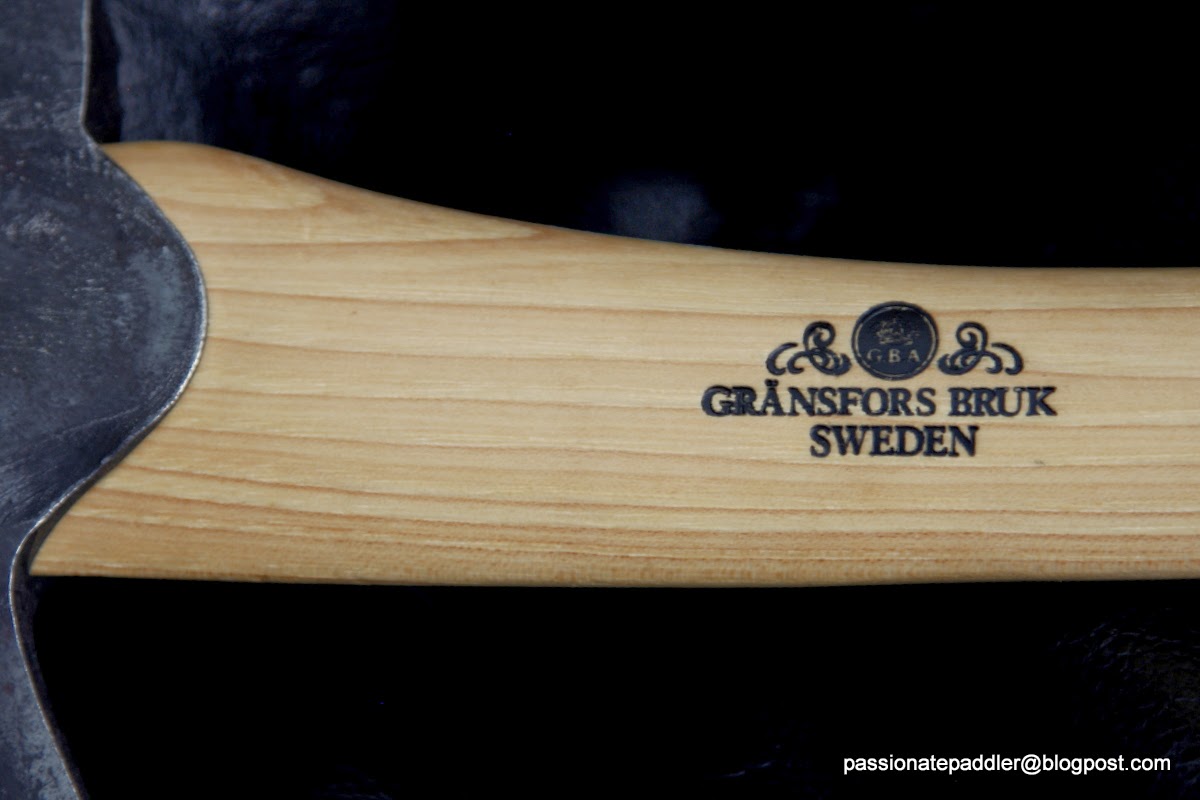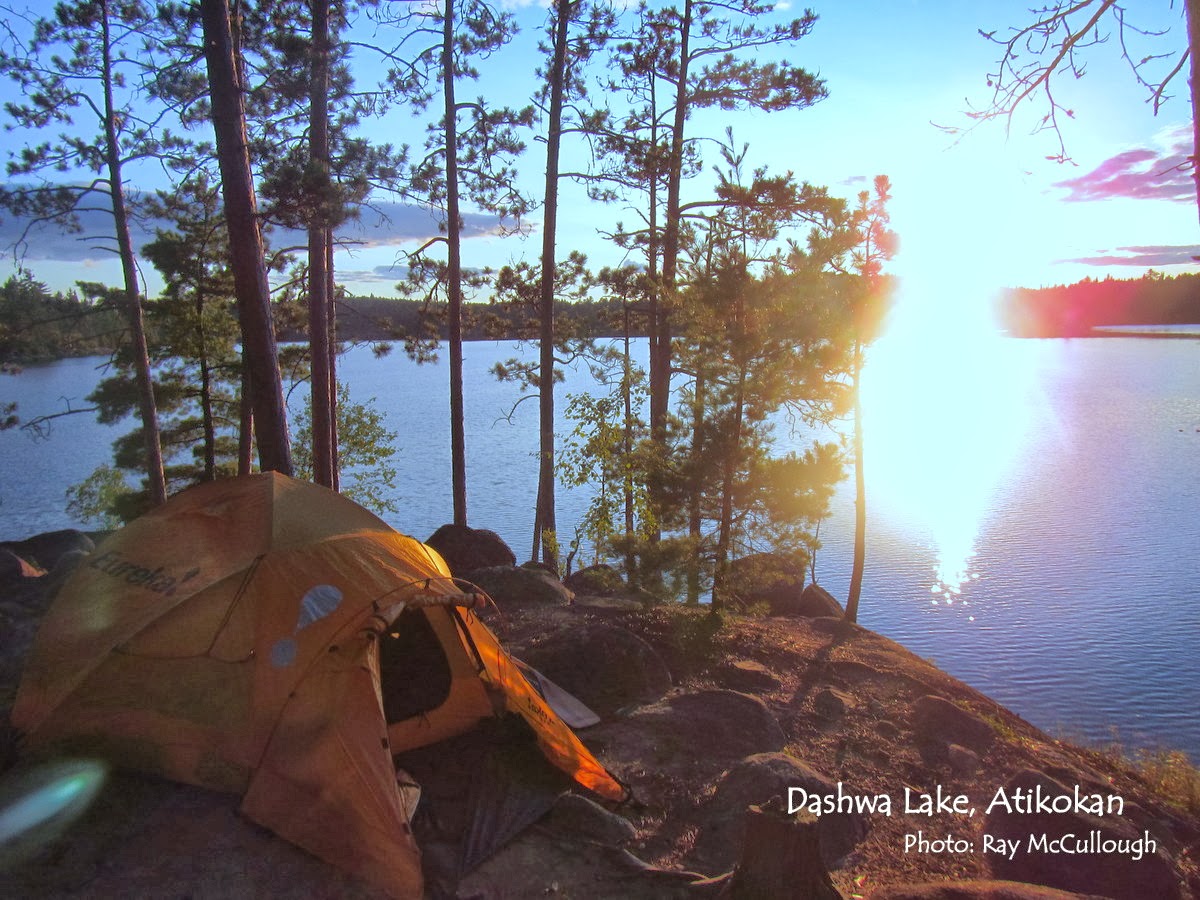The most important question as always, is how did it perform?
No better way to find out, then through field tests.
When you've had the opportunity to use various twig stoves, you know fairly quickly if the design will work. I could tell even before I used the Firebox, it was going to work well. It had all the key elements that would facilitate a good burn. Plenty of ventilation from the bottom plate, through to the side plates, and most importantly, a gap at the top for the exhaust gases to exit out of. Of course, no one evaluates gear by just looking at it. Field use is the only way to really find out. But before we get into that, let's find out what other physical elements make this a good stove.
You can either use those long pieces of wood for cooking over
a firepit, or use them more efficiently in the Firebox.
The heavier weight of the stove, which in many respects is often viewed as a negative, was actually a positive. Most times, the combination of the pot and water/food is often heavier than the twig stove below, so there is a weight imbalance. It becomes a top heavy situation, which isn't ideal. However, this is where the Firebox shines, as the heavy stove becomes a solid stable base. Often times, whatever combination of pot/content I had on top, it was equal, or less than the weight of the stove below, which gives an extra measure of confidence to the user that it can't easily be knocked over.
Versatility is another great quality of the Firebox. It can be used
with other combustibles, like alcohol in this picture.
The vertical design and height of the stove can also be seen as a detriment, as it would be more prone to tipping. But as I've already mentioned, the stove weight helps to off set that risk. But there are benefits to this design. A taller vertical element allows you to put longer twigs in and angle them against the side wall, so that they rest above the flame. This is ideal when you have slightly damp wood, so that it has an opportunity to dry it out before catching fire. Otherwise, putting smaller pieces of twigs in, whether dry or not, often times land on top of the coals and flames, temporarily stifling it. This unfortunately creates a cycle of high heat vs low heat, as the new wood has to catch on again to build pp the flame and heat.
Rain? No problem. The Firebox will follow
you under the tarp.
Now that we've covered the physical attributes of the stove, the big question ultimately comes down to whether the Firebox performed as well as expected in the field. The simple answer is yes. The Firebox did not disappoint, nor had issues while in use. It had plenty of ventilation from the bottom and sides to feed the stove oxygen. The spacing at the top was adequate for all the hot gases to escape and not temper the flame. The windscreen helped when directed into the wind, to keep the flame upright, opposed to horizontal. It was stable and I never once feared that it would tip over. (Assuming you're on a good flat base.) It simply just worked well, and did it time and time again. In fact, there was little that I had to quibble about in how the stove worked. As you'll see, the only two things I will mention below, are just minor inconveniences.
Here's the Firebox with the windscreen up,....
....and here with the windscreen down.
The first thing is getting a fire lit in the Firebox. Because of it's tall vertical design, it isn't always easy to light from the bottom, as there are no slots on the sidewall to put your match or lighter through. One way to deal with this, is to make sure your tinder is right at the bottom, so that when you put a flame in through the bottom where there are big holes, it will easily catch. (You will need to remove the ash tray first.) The other alternative is doing a top down burn, which basically entails stuffing the stove with dry twigs/wood topped with tinder, and then lighting it from the top. This is ideal, only if you have good dry material underneath for the flame to easily catch. Otherwise, a bottom burn is preferable for less than perfectly dry material. In any case, both ways works, you just have to decide based on circumstances.
With a twig stove like the Firebox, you don't even need a
saw or axe. Twigs is really all you need.
The other thing is the Fire Sticks. I used them on and off, but most times I didn't. The biggest problem I foresee with these Fire Sticks, is losing them. Once they are heated and discoloured, you can easily lose them in the dirt or grass, as they blend in so well. So the best thing probably is to put them on the stove and just use them. The only reason I often didn't, was because my pot was big enough that I didn't need them, and because they got in the way of me feeding the stove. (Bigger twigs) But at the same token, I love them for moving coals, adjusting the wood inside the stove, and transporting the stove itself. They really are handy, but you just have to be mindful of where you put them, if you don't need them.
There is one thing that I would like to mention and remind everyone who uses twig stoves. (This is not exclusive to the Firebox.) The ash tray on the Firebox is elevated from the ground, and I wondered if it was enough to keep the ground from charring. Nope. Therefore, whether the Firebox or any other twig stove, please be mindful and place a non-combustible material underneath the stove. A flat rock is ideal, or a gravel/sand/rock base would work as well. Other options can include digging into a clay base, or maybe even placing it on a block of wood. In any case, to prevent the campsites from being scarred with blackened and charred spots, please use common sense and good foresight to prevent this from happening. Thanks.
Another place to use the Firebox, is in the firepit. No worries about
the ground underneath, and the mess is all contained.
Lastly, I'm going to touch on the subject of the Firebox's weight again, as I'm sure, this issue may put people off from purchasing this stove. It is undeniably heavy. It certainly is not the ideal stove for someone going ultralight, or trying to save some weight off their backs. There are plenty of other alternatives. But let me point out one thing. This stove will outlast you. It is built like a tank. That thick stainless steel metal will not wear out anytime soon, nor will it warp. (Which is a common trait of thin-walled twig stoves.) A little warping is often not a big deal, but for a hinged set-up such as the Firebox, it is crucial. If anything warps, there would be no way it would come back together so nicely. So there is a very valid reason for it's thickness, besides the fact, that this stove will most certainly last a lifetime. How many outdoor things or gear that you own, have that kind of durability? Yeah, I thought so.
The beauty of a twig stove, is that it can do more than just help
you cook. It can provide warmth and ambiance,
even when solo.
So is this the perfect twig stove? No, but close. It is solidly built, is very versatile, and performs well. If weight is not a concern, then this could be the last twig stove you will ever own.With everything in life, often times, there are trade offs. The goal of perfection is a seemingly endless pursuit. One in which it could be accomplished down the road sometime. We can wait a lifetime to find out, or we can use the best of what we have right now. In that timeline, some will be waiting, and others will be using the Firebox stove. It's your choice.
The Firebox's build will be it's legacy, as it will probably be
around long after you're gone.
If this stove fits your bill, and is to your liking and needs, you can order/purchase it here in Canada from the Canadian Outdoor Equipment Store in Mississauga. If you are from the US, or an international locale, alternatively, you can order straight from the company's website at www.fireboxstove.com.
Enjoy, and happy camping!
tPP




















































